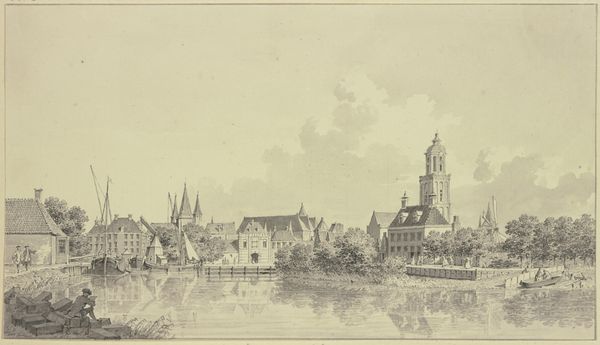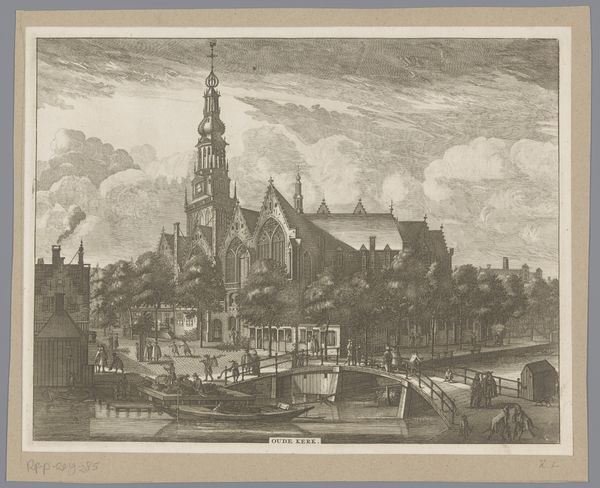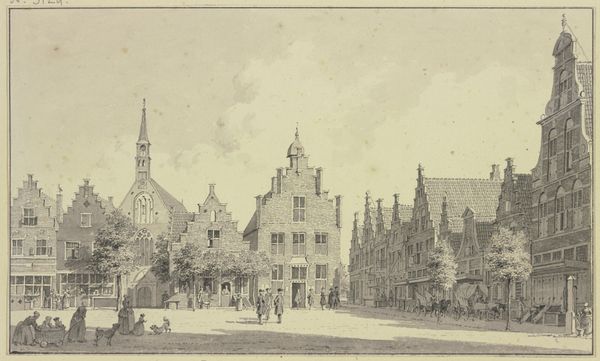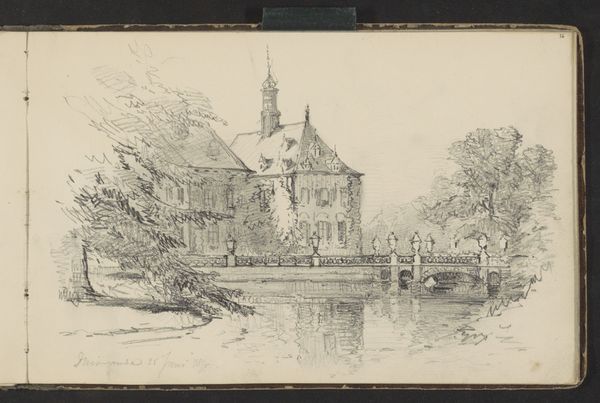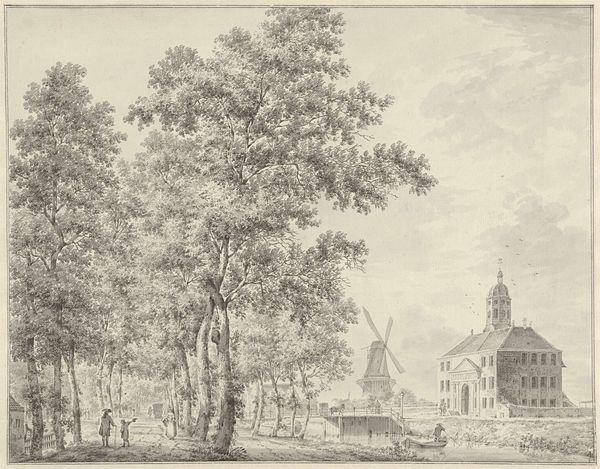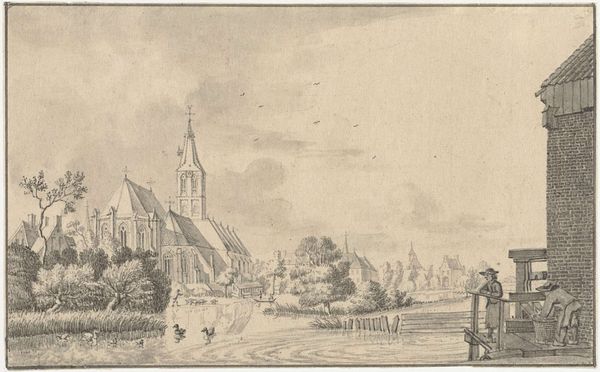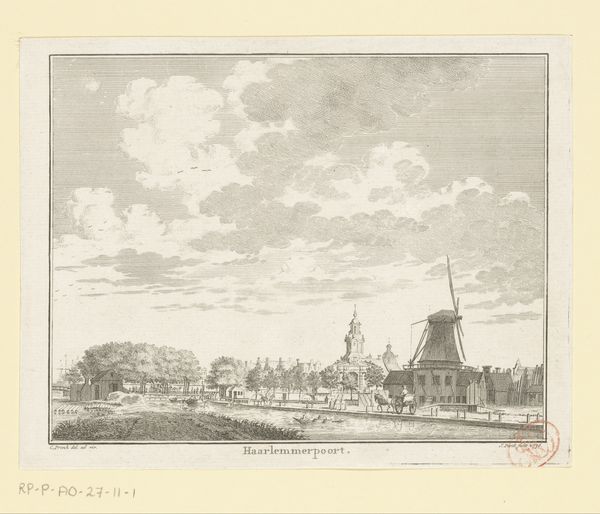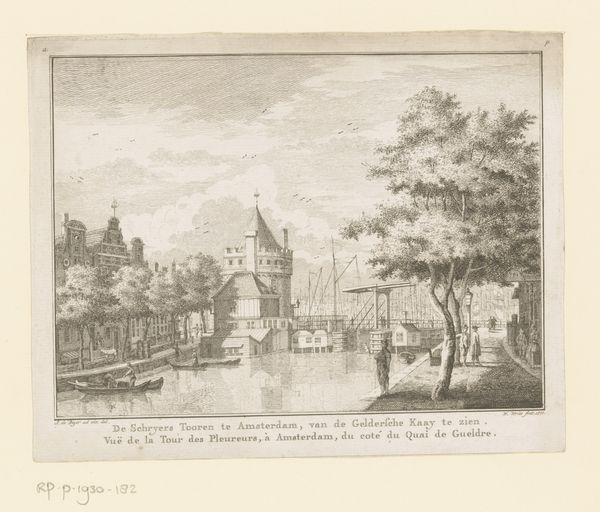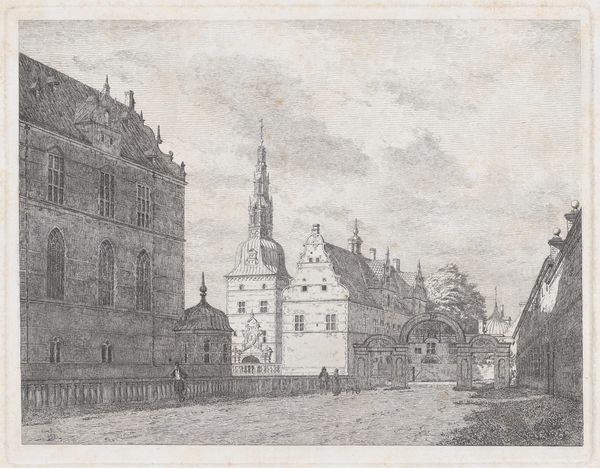
drawing, paper, ink, indian-ink, architecture
#
architectural sketch
#
drawing
#
landscape
#
paper
#
ink
#
indian-ink
#
15_18th-century
#
cityscape
#
architecture
Copyright: Public Domain
Editor: Here we have Cornelis Pronk's drawing, "Het huis ter Does," created sometime in the 18th century with ink on paper. I'm struck by the detail in this cityscape. How does it reflect the economic life of its time? Curator: Well, looking at the medium itself – ink, likely Indian ink, on paper – speaks to a burgeoning trade in materials for both commercial and artistic endeavors. Consider the paper; where was it produced, by whom? These kinds of topographical drawings were commissioned. Who were Pronk's patrons and what did they desire to communicate? Editor: So, beyond the scene depicted, the very materials tell a story about 18th-century trade and consumption. How did the growth of trade networks and the availability of these drawing materials change artistic production? Curator: Exactly! The Dutch Republic at this time was a nexus for global commerce. Cheaper paper and inks democratized artistic production to some degree. Think about the labour involved in each step. Who made the ink, processed the paper, transported it? Also, what kind of labor do you see being represented in the sketch itself? What economic classes? Editor: I see figures near what looks like a canal. The architectural details suggest some level of wealth. Maybe this drawing shows an idealized view, obscuring the labor that sustained it. Curator: Perhaps, but what's interesting to me is thinking about Pronk's labour as an artist and draughtsman within this system. Where did he source his supplies? Was he also participating in that consumption cycle that his sketch inadvertently captured? Editor: This makes me consider the physical act of drawing and how Pronk, through his craft, also participated in shaping our understanding of 18th-century Dutch society and its material footprint. Curator: Absolutely. It reveals how art wasn’t just representational, but intrinsically tied to networks of production, materials, and the circulation of goods. We gain more when we start breaking it down, literally, from paper and ink up.
Comments
No comments
Be the first to comment and join the conversation on the ultimate creative platform.
